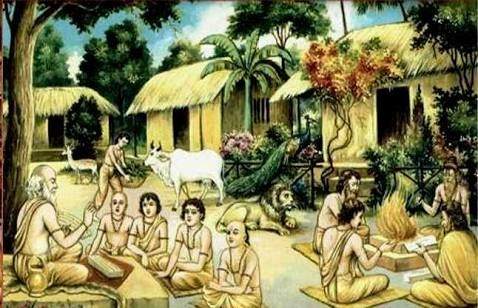The education system in ancient India was diverse and rich, with a focus on both theoretical and practical knowledge. The system was based on the principle of "Vedic learning," which emphasized the pursuit of knowledge as a spiritual journey. The ancient Indian education system was highly respected and had a profound influence on the development of education in other cultures, including the Western world. This article will examine the education system in ancient India, including its history, main institutions, and key figures.
Early Education
Education in ancient India began in the home, where children were taught basic skills and values by their parents. Boys were typically sent to live with a guru, or teacher, at the age of five or six to receive formal education. Girls were also educated, although their education was often limited to domestic skills and religious instruction.
The Gurukula System
The Gurukula system was the primary institution of education in ancient India. Gurukulas were residential schools where students lived and studied with their teachers. The students were known as "shishyas," and the teachers were known as "gurus." The guru-shishya relationship was considered sacred, and the students were expected to show complete devotion and obedience to their teachers.
The curriculum in the Gurukulas focused on the study of the Vedas, the ancient sacred texts of India. The students were also taught subjects such as grammar, literature, logic, and philosophy. Physical education and martial arts were also important parts of the curriculum.
The Nalanda University
The Nalanda University, located in present-day Bihar, India, was one of the most renowned institutions of higher learning in ancient India. The university was founded in the 5th century AD and was in operation for over 700 years. It was a major center for Buddhist studies, but also offered courses in subjects such as logic, grammar, and medicine.
The university was renowned for its library, which was said to contain over nine million manuscripts. The library was a major attraction for scholars from all over the world. Nalanda University was also known for its highly qualified teachers, many of whom were renowned scholars in their own right.
Key Figures in Ancient Indian Education
There were many influential figures in ancient Indian education, but some of the most notable include:
- Panini is a grammarian who is considered the father of linguistic science in India. He wrote the "Ashtadhyayi," a comprehensive treatise on Sanskrit grammar that is still studied today.
- Chanakya, also known as Kautilya, was a statesman and philosopher who wrote the "Arthashastra," a treatise on statecraft and economics.
- Patanjali, a grammarian and philosopher wrote the "Mahabhasya," a commentary on Panini's "Ashtadhyayi."
- Vatsyayana, author of the "Kama Sutra," an ancient Indian text on human sexual behavior.
Conclusion
The education system in ancient India was highly developed and had a profound influence on the development of education in other cultures. The Gurukula system and institutions like Nalanda University played a crucial role in preserving and transmitting knowledge. The emphasis on spiritual development, along with the pursuit of knowledge, has left a lasting legacy in the field of education. The contributions of figures such as Panini, Chanakya, Patanjali, and Vatsyayana have also had a lasting impact in their respective fields and continue to be studied today. Despite the passage of time and the many changes that have occurred in the Indian education system, the principles and methods of ancient Indian education continue to be valued and respected in modern times.
The Gurukula system, for example, has been revived in recent years as a way to preserve traditional knowledge and values. Nalanda University has also been rebuilt and is now a major center for Buddhist studies and research. Additionally, many of the ancient texts and treatises were written by key figures such as Panini and Chanakya are still studied and referred to in contemporary education and research.
One of the most significant legacies of ancient Indian education is the emphasis on the pursuit of knowledge as a spiritual journey. This idea, known as "Vedic learning," has had a lasting impact on the way education is perceived and practiced in India and around the world. The belief that knowledge is not just a means to an end, but a path to self-realization, has been a driving force in the development of education in India and continues to inspire educators and students today.
In conclusion, the education system in ancient India was a highly developed and sophisticated system that had a profound influence on the development of education in other cultures. The Gurukula system and institutions like Nalanda University played a crucial role in preserving and transmitting knowledge, and the emphasis on spiritual development and the pursuit of knowledge has left a lasting legacy in the field of education. The contributions of key figures such as Panini, Chanakya, Patanjali, and Vatsyayana continue to be studied and valued in modern times, and the principles and methods of ancient Indian education continue to be an inspiration for educators and students today.

